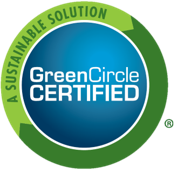
Jade Plant Care Instructions
In 2001, SSC was founded with a single thriving jade plant—a small but resilient symbol of growth. Our Co-founders, Tad and Tara, nurtured that jade plant alongside the budding company, watching it flourish as SSC grew. Over the years, this original "mother plant" has been repotted a remarkable 10 times, each move a testament to its resilience.
By 2016, it had become a staple of our headquarters in Royersford, PA, where Tad and Tara propagated it into 16 new jade plants, each one thriving. And from these plants, hundreds of cuttings have since been shared with friends, family, and coworkers—a living legacy of our journey and a symbol of good energy and connection.
Now, we’re thrilled to share a piece of this legacy with you. Jade plants, often called “money trees,” are known for bringing positive energy and attracting prosperity. As you nurture this plant, may it bring you as much joy, good fortune, and inspiration as ours have brought us.
The Story Behind Our Jade Plants
1 of the 16 beautiful jade plants in our office.
Jade Plant Care Instructions
Jade plants prefer bright, indirect light, but can tolerate a few hours of direct sun. They are not suited for low light conditions.
Sunlight:
Water:
Water jade plants every one to two weeks, allowing the soil to dry out completely between waterings. Water more frequently in the spring and summer, and less frequently in the winter.
Jade plants prefer temperatures between 65°F and 75°F. They can tolerate nighttime temperatures of 50–55°F
Temperature:
Jade plants are easy to propagate! Jade plants can be propagated by rooting a stem cutting or a leaf in soil.
Propagation:

Grow Trust with the Certified Sustainability Facts (CSF) label.
GreenCircle’s CSF Label
The CSF label is a culmination of multiple sustainability attributes for a product and its manufacturing operation that supports a circular economy, human health, climate health, ecosystem health, and social health & equity.
The label allows companies to measure and drive continuous improvement in the sustainability of their products and manufacturing operations in a transparent manner; and communicate that sustainability in a format that is easy to read and understand.
To be eligible for the CSF Certification, GreenCircle requires a minimum of two attributes in two different sustainability categories, with at least one attribute in Circular Economy, Human Health or Climate Health.
The CSF Certification has been accredited by The ANSI National Accreditation Board (ANAB).
The American National Standards Institute (ANSI) is a private, non-profit organization that manages and supervises the U.S. voluntary standards and conformity assessment system. The ANSI National Accreditation Board (ANAB) is a non-governmental organization owned by ANSI. ANAB “certifies the certifier” by offering accreditation services to organizations in the public and private sectors.
The ANSI National Accreditation Board (ANAB) is the largest multi-disciplinary accreditation body in the western hemisphere, with more than 2,500 organizations accredited in approximately 80 countries. The ANSI National Accreditation Board is a non-governmental organization that provides accreditation services to public- and private-sector organizations. ANSI, the owner of ANAB, is the U.S. body to the International Organization for Standardization (ISO).
Who is ANAB?
What is ISO/IEC 17065 Conformity Assessment?
Requirements For Bodies Certifying Products, Processes And Services. This International Standard specifies requirements, the observance of which is intended to ensure that certification bodies operate certification schemes in a competent, consistent and impartial manner, thereby facilitating the recognition of such bodies and the acceptance of certified products, processes and services on a national and international basis and so furthering international trade.
Know Your Impact, Show Your Impact
Bring visibility and credibility to your sustainability efforts with robust third-party certification.







